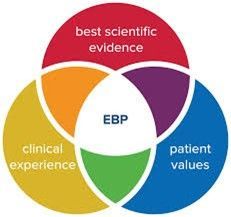What Behavioral Health Executives Face in 2025
Streamlining operations, leveraging technology, and exploring innovative approaches will allow behavioral health organizations to thrive.

The COVID-19 pandemic significantly altered the stigma surrounding behavioral health care and its underutilization, highlighting the need for treatment among many Americans. While this shift increased access and services, it posed numerous challenges for providers. NextGen Healthcare consulted with 30 behavioral health executives, who identified their top five challenges for 2025.
1. Finances – Two key issues will persist this year. First, inadequate reimbursement for providers makes it difficult to maintain operations. This issue is compounded by delays in reimbursement, forcing providers to seek debt financing or reduce their operations. Providers noted that, as the old saying goes, organizations cannot put all their eggs in one basket. Diversifying their business portfolios, including private and public financing, offers a buffer against fluctuating reimbursements and extended receivable days. Lastly, recruiting and retaining employees will continue to impact an organization’s stability.
2. Technology-Given the financial challenges, these executives use technology to streamline their operations. The potential of technology and AI will be scrutinized to help lower administrative costs and enhance efficiency. Electronic health records and the claims process will become more integrated to minimize duplicative tasks. Any way an organization can increase the volume of clinical services while lessening the paperwork burden on clinicians will simplify the treatment process.
3. Medicaid—As mentioned earlier, expanding into Medicaid programs can help counterbalance the unpredictability of the private insurance market. Medicaid beneficiaries often have more significant needs, resulting in longer-term treatment cycles. However, Medicaid also comes with drawbacks, such as lower reimbursements and uncertainty around state and federal funding in the future. The executives emphasized the need for more education and advocacy with legislative partners to foster an understanding of the health benefits associated with treating this population.
4. Diversification—The influx of behavioral health funding into the marketplace has significantly increased the number of providers. Competition is intensifying among traditional brick-and-mortar, field-based, telehealth-based, and hybrid models. Executives mentioned that targeting specialized markets can be an effective strategy to differentiate themselves in the marketplace. Emphasizing services for substance use, the ID/DD population, or the LGBTQIA+ community provides opportunities to create robust programs that deliver culturally competent treatment to specific groups.
5. Strategic Partnerships - Finally, executives indicated that forming strategic partnerships will be vital this year. Collaborating with government entities, school districts, regional health organizations, and other affiliations can establish an organization's strong pipeline of referrals and contracts. An example of this approach is how mental health providers are developing partnerships with school districts to assist with the mental health crisis in schools.
By streamlining operations, leveraging technology, and exploring innovative approaches to behavioral health, organizations can thrive in 2025 and develop strategic plans for the upcoming years.




